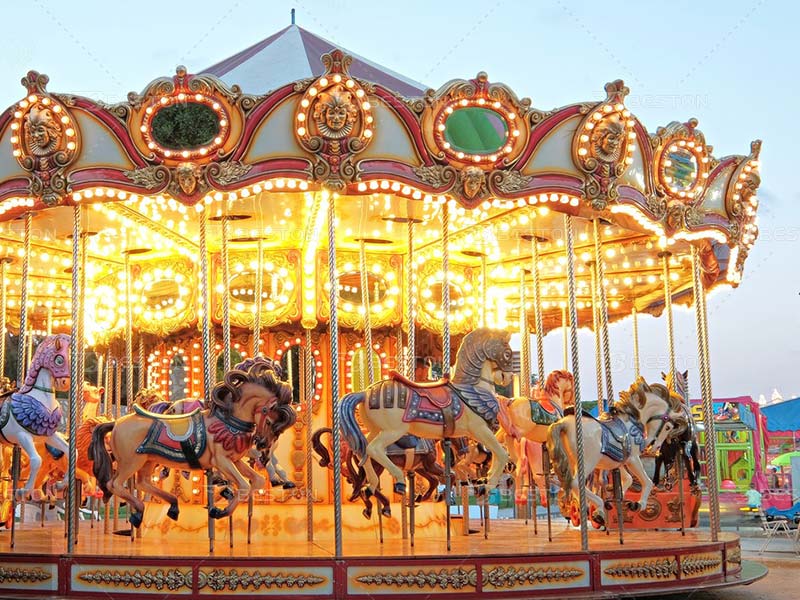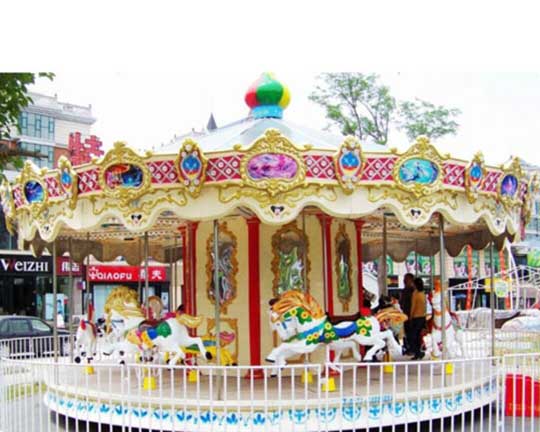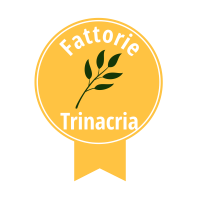Carousel rides, with their timeless charm and whimsical allure, have been a staple in amusement parks and fairs for generations. Beyond the joy they bring, carousel rides are subject to various factors that influence their pricing. Understanding these factors sheds light on the dynamics of the amusement park industry and consumer behavior.

how much does a carousel cost
1. Location and Demand
Location serves as a pivotal determinant in pricing carousel rides. Amusement parks nestled in bustling city centers or tourist hotspots often witness high foot traffic and demand for entertainment. In such locales, carousel operators may adjust their pricing strategies to capitalize on the influx of visitors. The principle of supply and demand dictates that when demand exceeds supply, prices tend to rise. Thus, carousel rides in popular destinations may command higher prices due to increased demand. So how much does a carousel cost?
Moreover, the demographic composition of the area can influence pricing. Affluent neighborhoods or regions with a high disposable income may support higher pricing for carousel rides, as visitors are willing to pay more for premium experiences. Conversely, in economically disadvantaged areas, carousel operators may adopt more affordable pricing structures to cater to the local community’s financial constraints while still fostering accessibility to the amusement.
2. Operational Costs
Behind the enchanting facade of carousel rides lie substantial operational costs that factor into pricing decisions. Maintenance of carousel for sale forms a significant component of these costs, encompassing routine inspections, repairs, and refurbishments to ensure the ride’s safety and functionality. Additionally, staffing requirements necessitate the allocation of funds for wages, training, and employee benefits. Operators must also account for overhead expenses such as insurance premiums, utilities, and administrative costs.
The magnitude of these operational expenses varies depending on factors such as the carousel’s size, age, and complexity. Vintage carousels, adorned with intricate hand-carved figures and ornate decorations, may entail higher maintenance costs compared to their modern counterparts. Consequently, carousel operators may adjust their pricing to reflect the operational overheads incurred, ensuring the sustainability of their business ventures.

merry go round ride for sale
3. Quality and Uniqueness
Carousel rides encompass a spectrum of designs, ranging from classic wooden structures of fairground carousel for sale adorned with whimsical animals to contemporary installations boasting innovative features and themes. The quality and uniqueness of a carousel play a pivotal role in shaping its perceived value and, consequently, its pricing. Carousels distinguished by exceptional craftsmanship, artistic detailing, or historical significance may command premium prices, appealing to aficionados and collectors.
Furthermore, themed carousels tailored to specific interests or cultural motifs can evoke a sense of novelty and exclusivity, thereby justifying higher pricing. Operators invest in these thematic elements to differentiate their offerings in a competitive market landscape and cultivate immersive experiences for patrons. The inherent value attributed to quality craftsmanship and thematic ingenuity influences consumer willingness to pay, contributing to the pricing dynamics of carousel rides.
4. Seasonal Factors
Seasonal fluctuations exert a significant influence on the pricing dynamics of carousel rides. During peak seasons characterized by holidays, school vacations, or favorable weather conditions, amusement parks experience heightened visitor traffic and demand for recreational activities. Carousel operators leverage this surge in demand by adjusting prices upward, capitalizing on the willingness of patrons to indulge in leisure pursuits.
Conversely, off-peak periods witness subdued activity levels, prompting operators to implement pricing strategies aimed at stimulating demand. Discounted rates, promotional offers, and bundled packages may be deployed to incentivize visitation and offset the impact of reduced foot traffic. Additionally, special events or festivals held during specific seasons may influence pricing decisions, with operators aligning their strategies to accommodate the unique preferences and spending patterns of attendees.
In conclusion, the pricing of carousel amusement park rides for sale is shaped by a confluence of factors encompassing location dynamics, operational considerations, quality attributes, and seasonal variations. As operators navigate the intricacies of pricing strategy formulation, they must strike a delicate balance between revenue optimization and consumer value perception. Ultimately, the enchantment of carousel rides transcends monetary considerations, captivating audiences young and old with its timeless allure.

